If you're new to nutritional yeast and are unsure what it is or how to use it, this guide is for you! In this nutritional yeast primer, you will learn what it is, its nutritional benefits, and easy ways to include it in cooking and recipes.
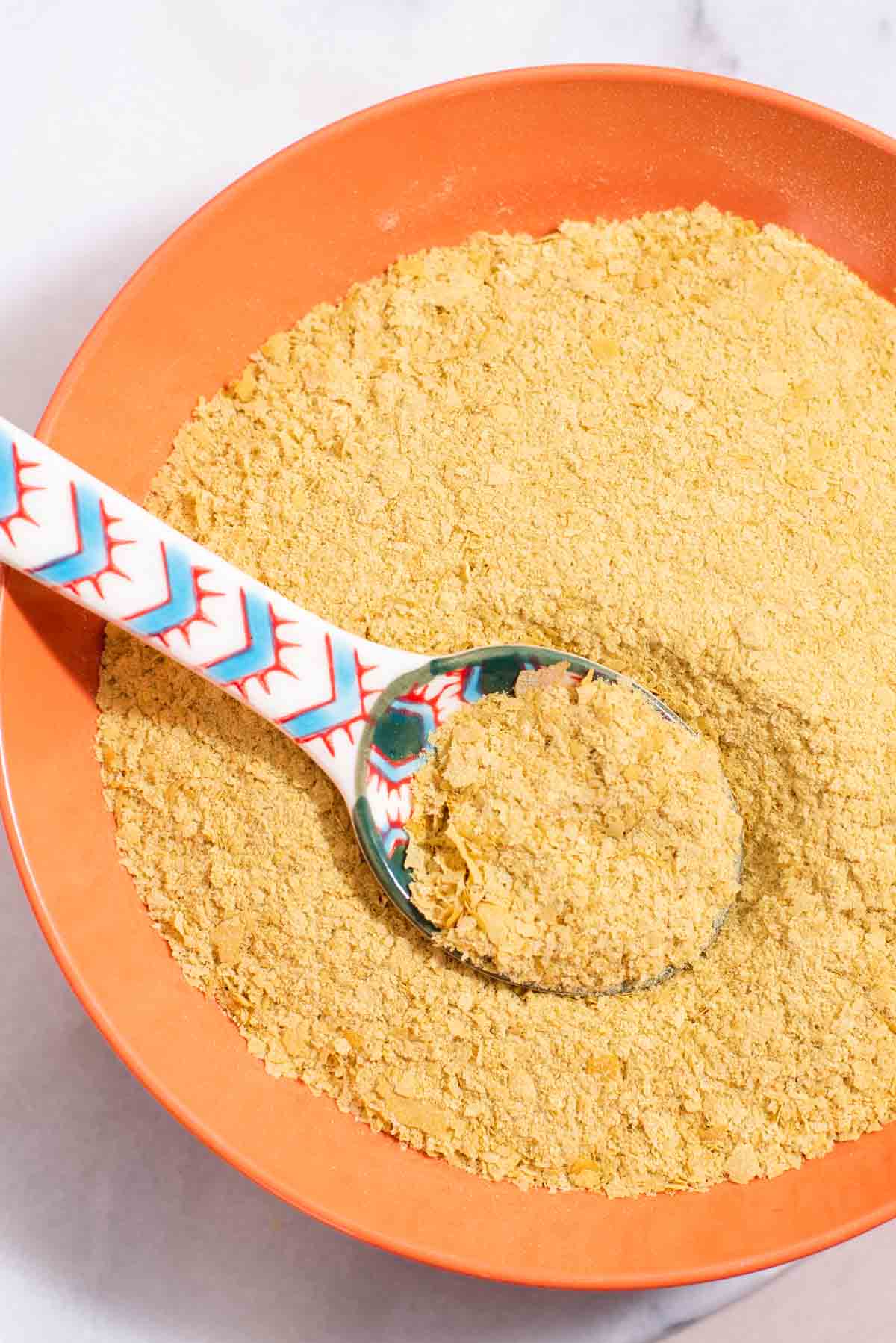
I'm asked all the time "What is nutritional yeast?". I'll admit that I had no idea what it was until I started eating a vegetarian diet. Now it's one of my favorite ingredients and I cook with it almost every day!
So let's talk about nooch and its uses from this dietitian's perspective. In this guide, we'll talk about what it is, if it's healthy, and how to use it.
Nutritional yeast is a savory, nutty all-purpose seasoning. It is most commonly used to add a cheesy flavor to vegan and dairy-free recipes, but it can do so much more than just stand-in for cheese!
Not only is it a flavorful ingredient, but it's also brimming with important B vitamins like Vitamin B12. Nutritional yeast is also low in sodium, making it a great option for those looking to reduce salt intake without sacrificing flavor.
Jump to:
What is nutritional yeast?
Types of yeast
If you're new to cooking with nutritional yeast, don't get it confused with active yeast and baker's yeast. They are not interchangeable.
Here are the differences between these kinds of yeast:
- Bakers yeast: Use this in baking to make yeasted bread, like yeast rolls. It comes in different forms like active dry, instant, and liquid.
- Nutritional yeast comes from a species of yeast called Saccharomyces cerevisiae, the same type of yeast used to brew beer and bake bread. Although it is similar to baker's yeast, it undergoes a heating and drying process that makes it inactive. Nutritional yeast is made by culturing the yeast with sugar from sugarcane or beet molasses. It is then deactivated, harvested, washed, and dried.
Nutritional yeast is available as flakes or powder. Flaked nutritional yeast can easily be blended into powder in a blender or food processor.
Fortified vs unfortified
Nutritional yeast is available fortified and unfortified. Fortified yeast is more common and has added vitamins and minerals to increase the nutritional content.
Non-fortified nutritional yeast is made without the addition of vitamins and minerals. It is best used for those looking for the flavor of nutritional yeast without the addition of extra nutrients.
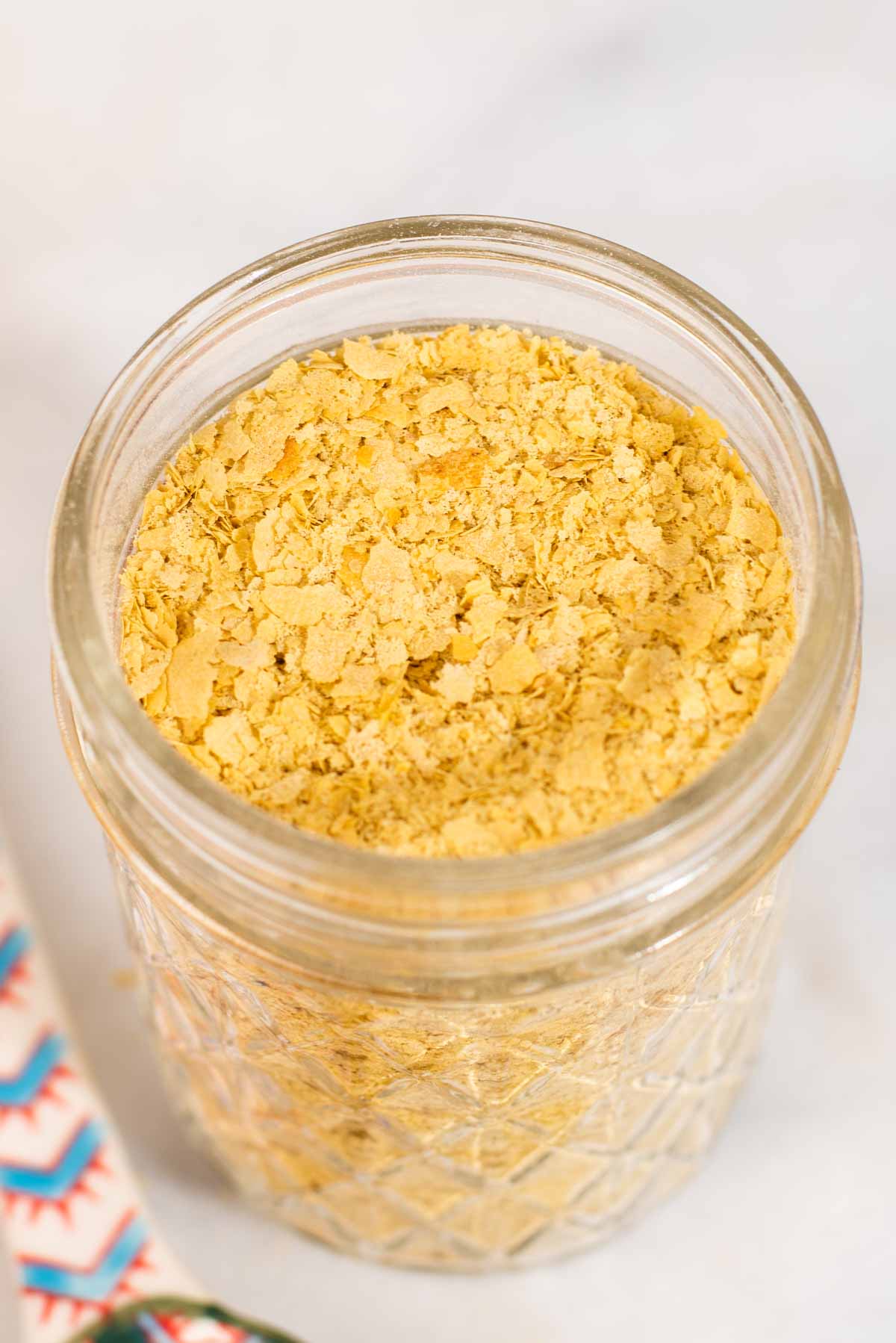
How it tastes
Nutritional yeast has a unique savory flavor. These are the words that I associate with nooch:
- Cheesy
- Nutty
- Savory
- Umami
- Dynamic
While commonly used as a dairy-free cheese replacement, it doesn't taste exactly like cheese. However, it does have a complex, savory flavor that makes it a great option to add extra depth to vegan cheese.
Nutrition and health impacts
Nutritional yeast is a healthy addition to meals, especially for vegans looking to increase their vitamin B12 intake.
Fortified yeast is an excellent source of vitamins and minerals. It also contains protein, but it is unlikely that you would eat enough nutritional yeast to count as a serving of protein at meals.
Nutritional yeast is an excellent source of the B vitamins Vitamin B12, Vitamin B6, thiamin, riboflavin, and niacin.
One 9 gram (roughly 2 tablespoons) serving of nutritional yeast contains:
- 5 grams protein
- 2 grams fiber
- 300% daily value (DV) vitamin B6
- 470% DV Vitamin B12
- 420% DV Thiamin
- 160% DV Niacin
Because it is fortified, vitamin and mineral quantities vary from brand to brand.
Vitamin B12
Many manufacturers fortify nutritional yeast with vitamin B12. Vitamin B12 only occurs naturally in animal products, making fortified yeast a good source of vitamin B12 for vegans and vegetarians.
However, you should not rely on nutritional yeast as the sole source of vitamin B12 in a vegan diet.
Where to buy it
Nutritional yeast is available at most major grocery stores, from Walmart to Whole Foods to your local neighborhood health foods store.
You can find nooch in the health foods aisle or baking aisle. It usually comes in a cylindrical container but is also available in bulk. Buying nutritional yeast in bulk is an easy way to save a little bit of money.
Bragg's is one of the most well-known brands of nutritional yeast, but it is also available at Trader Joe's, in bulk bins at co-ops, and from Bob's Red Mill.
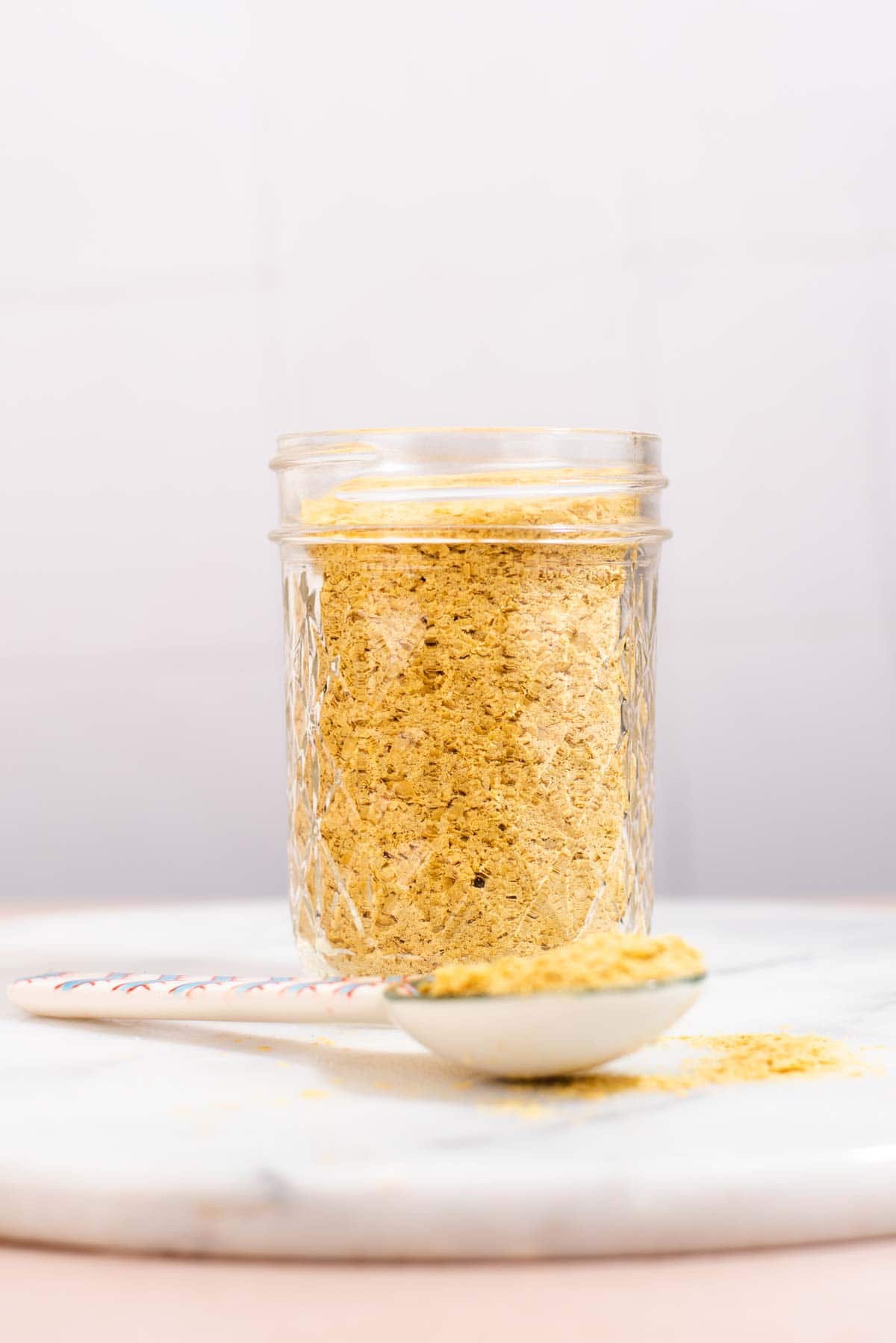
Substitutes in cooking
If you are here because you're wondering how to substitute nutritional yeast in cooking, I have bad news: nutritional yeast has a particular flavor and texture that is hard to replace.
Umami (savory) ingredients like soy sauce, miso, and vegetable Bouillon are the best vegan flavor substitutes for nutritional yeast. Grated Parmesan cheese is a good vegetarian replacement because of its complex flavors.
Baker's yeast is not a good substitute for nutritional yeast because it is bitter and not inactivated.
More commonly asked questions
No. Storing nutritional yeast in the fridge increases its shelf-life, but it does not need to be stored in the fridge or freezer to maintain its quality.
If stored in an airtight container in a cool, dark, and dry place, nutritional yeast can keep for up to 2 years. Consider storing it in the fridge or freezer if cool and dark pantry space is unavailable.
Yes, according to their website, nutritional yeast is whole 30 compliant.
Yes, it is vegan, dairy-free, and gluten-free.
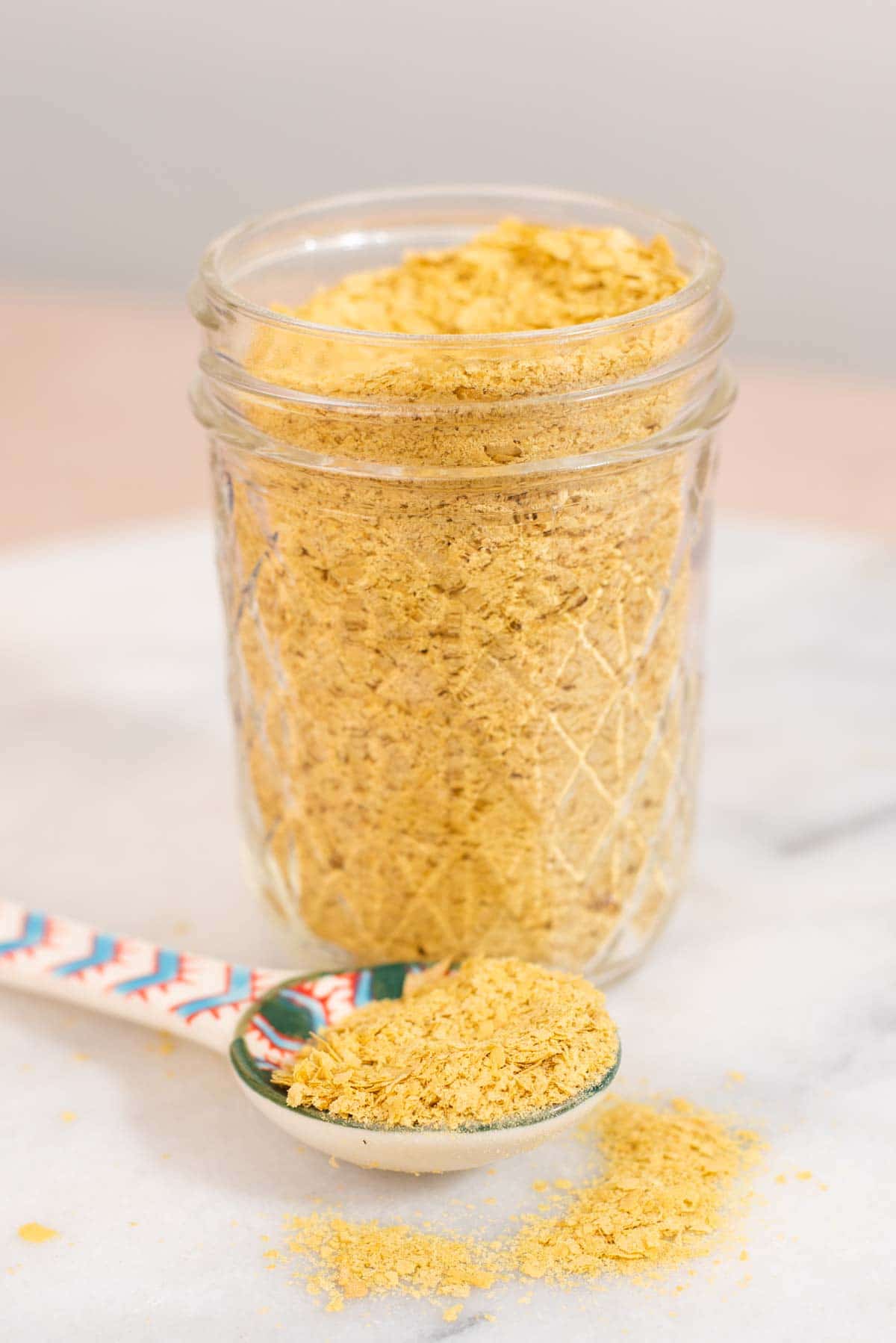
How to use it as a seasoning
While nutritional yeast is most popularly known as an ingredient in dairy-free cheese recipes, there are so many ways to use it in everyday cooking.
Here are a few of my favorite places to sprinkle nutritional yeast flakes:
- Popcorn: Use as a seasoning on homemade popcorn.
- Kale chips: Add a sprinkle of nutritional yeast flakes before or after baking kale chips.
- Pasta: Add nooch to tomato-based pasta sauce for a cheesy twist.
- Vegetables: Sprinkle on top of roasted vegetables or steamed vegetables as an all-purpose seasoning.
- Toast: Sprinkle on top of hummus toast or avocado toast for extra flavor.
How much to use
Start small, because nutritional yeast flakes have a strong flavor. If using nutritional yeast as a seasoning, try about 1 teaspoon per serving. If using it in cheese sauces, you may need to use ¼ cup to ½ cup of nutritional yeast.
Like flour, nutritional yeast will dissolve into liquid when it is heated.
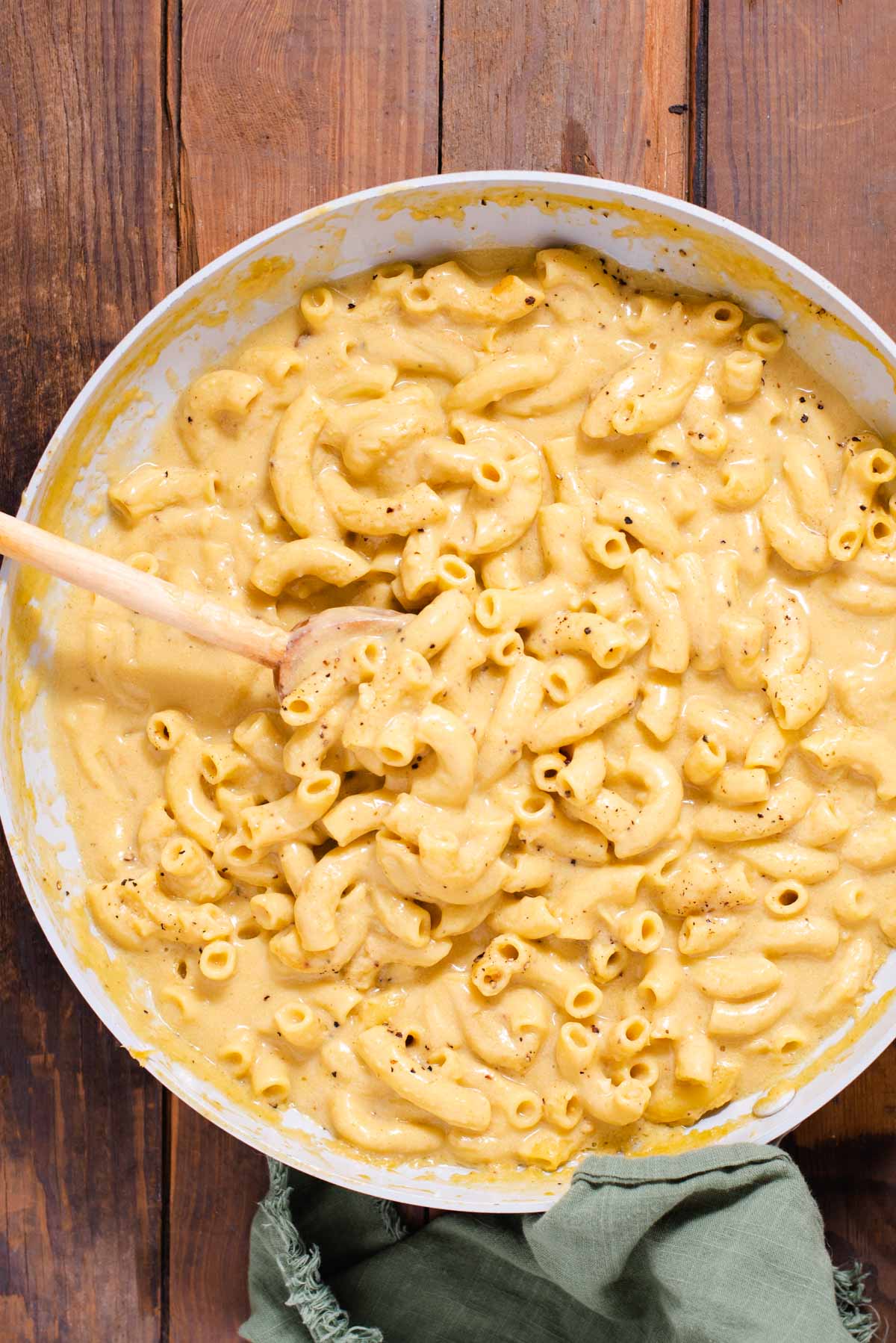
Nutritional yeast recipes
- Vegan mac and cheese: This is a key ingredient because it makes dairy-free mac and cheese cheesy!
- Use as a flavor addition to dairy-free alternatives like vegan queso, vegan cream cheese, and cashew cream.
- Tofu scramble: This is a key ingredient in my go-to tofu scramble recipe.
- Soups like vegan broccoli soup and vegan potato soup.
- Vegan fried rice: Nutritional yeast pairs with soy sauce to make a flavorful but simple vegan meal.
- Creamy vegan sauces like dairy-free alfredo sauce and cashew cream pasta.
- Air fryer tofu and marinated tofu feature savory flavors that take tofu to the next level.
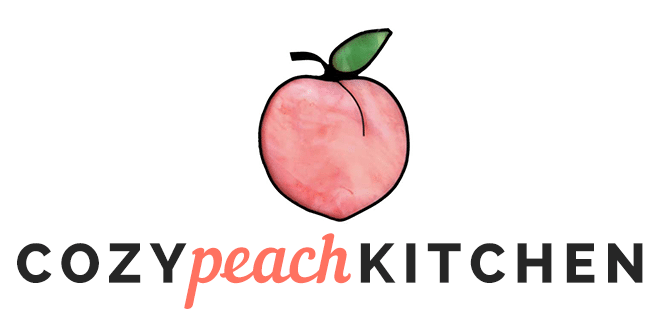

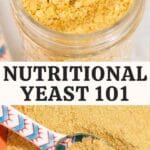
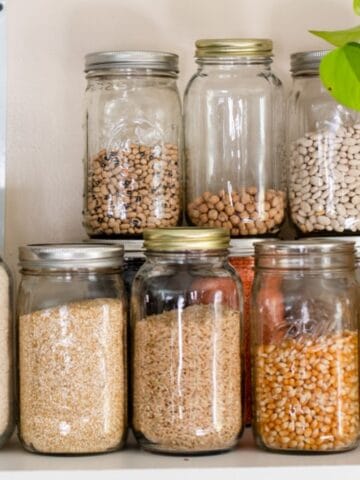
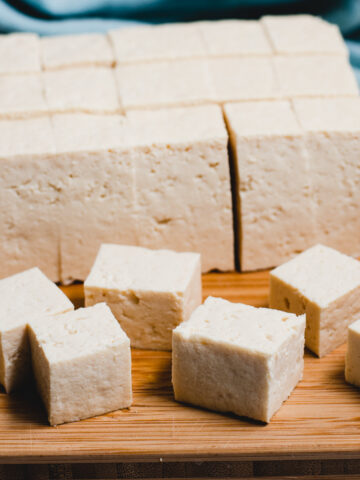
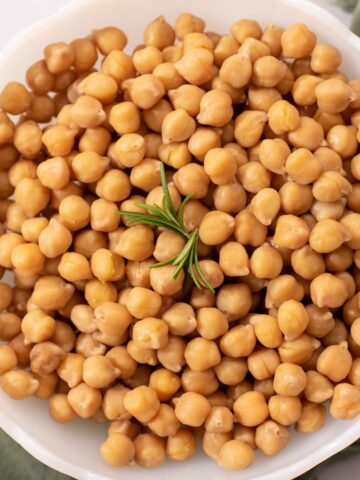
Veronica
Please can I replace bullion with nutritional yeast
Cassidy Reeser
It depends what you are using it for, because while they both have an umami flavor profile, they can't be used as a 1 to 1 swap. What recipe were you thinking of using it in?